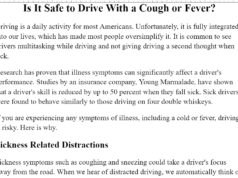SPONSORED CONTENT
Comparative Negligence: How to Determine Degrees of Fault
Comparative negligence in personal injury cases is a fundamental principle that equitably allocates responsibility and damages between the parties involved. Under this principle, a jury or judge assesses all parties in a personal injury lawsuit and assigns their relative liability in ratios. This article explains how the doctrine of comparative negligence determines the degrees of fault in a personal injury suit.
Evidence
The court will typically rely on the evidence both parties present to reconstruct the events that led to the accident. The evidence includes medical records, photos, videos, accident reports, and other documentation establishing the incident and the degree of fault. Therefore, the quality and credibility of the evidence presented are critical in assigning degrees of fault for each individual involved.
Expert Opinions
Sometimes, a court may request expert opinions for more specialized knowledge and analysis of the accident. For example, a judge may call for a reconstruction expert to examine the scene and analyze the evidence available. Then, they would provide their expert analysis of how the accident and injury occurred.
Also, a court may call medical experts in to evaluate the injuries sustained and how they connect to the incident. They will give their expert opinion, which helps the court understand the factors contributing to the accident. Expert opinions are vital for determining degrees of fault in a typical personal injury case.
Duty of Care
Another way courts determine the degree of fault under comparative negligence is through a duty of care. Under personal injury laws, duty of care refers to a person’s legal obligation not to harm others.
The court is responsible for deciding whether there is an existing duty of care and if they breached it. Also, the court determines how much consideration should be placed on circumstances and relationships like visitors interacting and drivers on roads.
Witness Testimonies
Witness testimonies give the court a first-hand account of what happened, helping to establish the behaviors of all the involved parties. The court considers the credibility and consistency of a witness’s statements to determine the degrees of fault. Also, the court would assess the relationships between the witnesses and bring potential biases into play.
Negligence
Another factor essential in establishing liability in personal injury cases in court is negligence. In this case, the court assesses whether at least one of the involved parties acted negligently or failed to exercise reasonable care. In other words, the court assesses the facts to determine if one or more involved party was negligent.
Under personal injury laws, negligence is failing to take necessary precautions or exercise adequate care. The degree of negligence typically varies from case to case, depending on the case’s specifics.
Adherence to Relevant Safety Standards
To assign liability, a court can evaluate whether all the parties involved obeyed the relevant safety regulations or standards. If any party fails to abide by such regulations, the court may hold them liable for the accident and the resulting damages.
Intentional Misconduct
Sometimes, the parties involved may not have been negligent but reckless and intentionally harmful. Individuals are considered reckless when they disregard the potential risks their behavior poses to others.
They have intentional misconduct when they deliberately act in a way that directly harms others. A court would consider these factors before assigning each party their degrees of fault.
Conclusion
“The allocation of liability and damages will depend on each party’s degree of fault. When multiple parties play a part in the accident, they must each share responsibility proportionately for the resulting damages,” says personal injury Attorney Rob Melchiorre of Keller Melchiorre & Walsh, PLLC.












